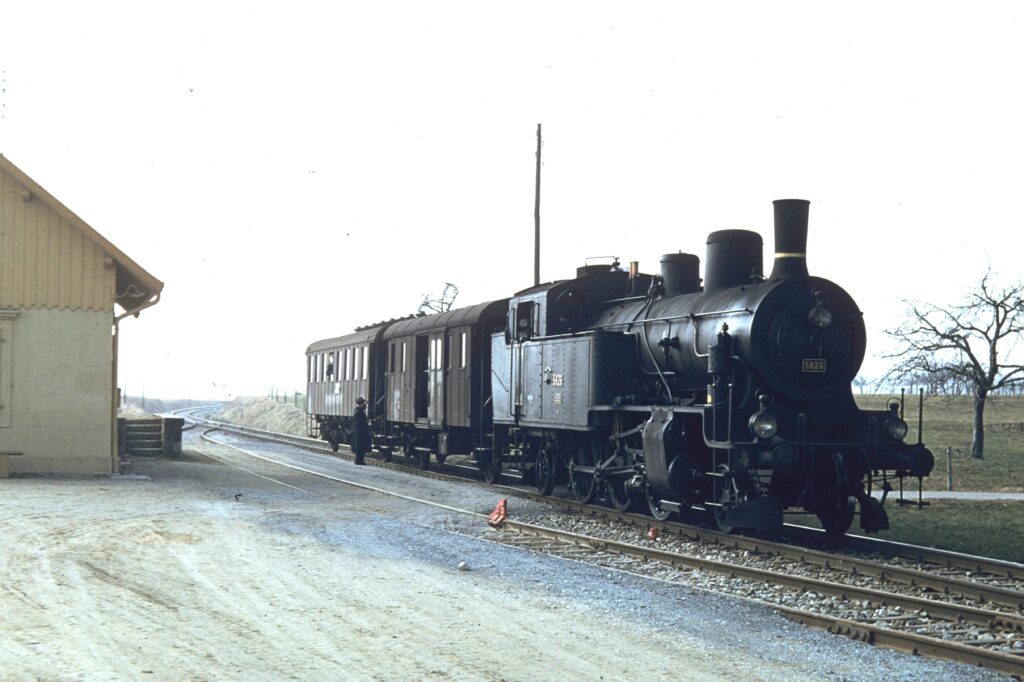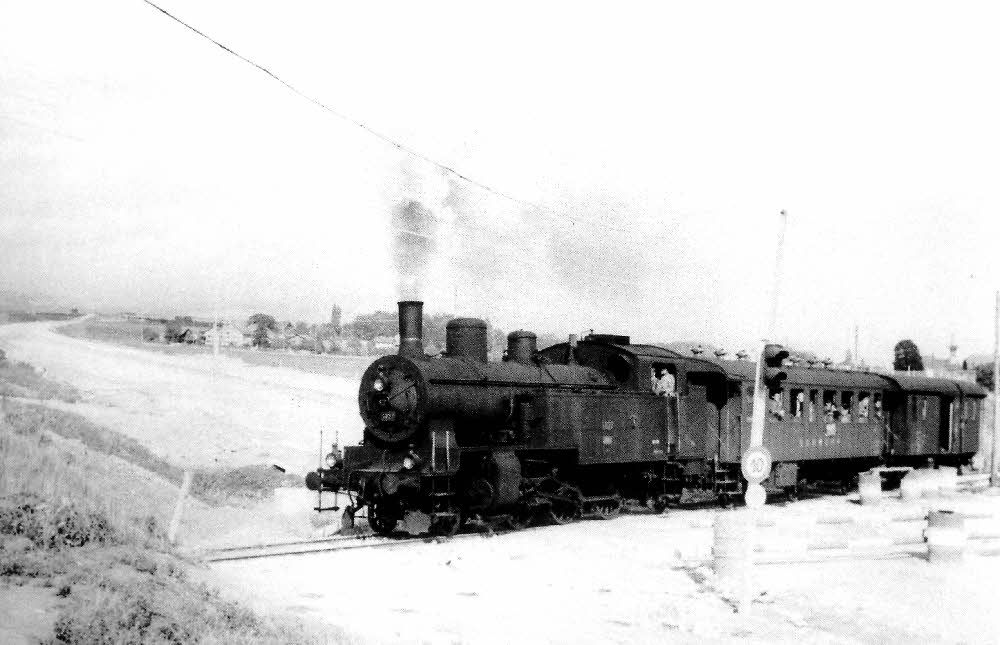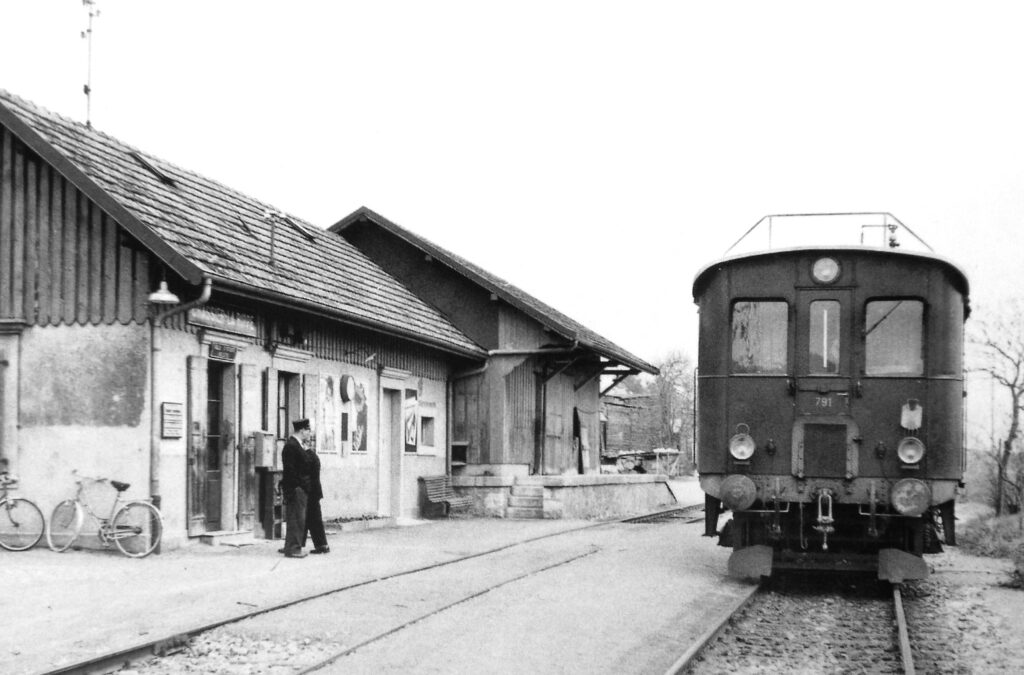
A Nyon bound passenger train at Borex-Arnex 1958
St. Gervais
Second Thoughts
Return to layout page
This follows on from "Swiss Layouts with a Difference" an article from the September 2018 Newsletter. As I wrote "People visualise Swiss railways as super clean alpine electric railways. While this is largely true my interest has been with minor lines that operated into the mid 1960's with small steam locos, short often mixed trains, had a tinge of Colonel Stephens, and were modelable in a small space."

A Nyon bound
passenger train at Borex-Arnex 1958
History
in 1905 the Chemin de fer Nyon - Crassier {NC} extended the Chemins de fer de
Paris à Lyon et à la Méditerranée branch to Divonne-les-Bains across the Swiss
boarder to Nyon on the Lausanne - Geneva mainline. Intermediate stations at
Crassier-La Rib, Borex-Arnex, and Eysins were basic with a combined station,
goods shed and loading dock served by a loop (double ended) siding. Crassier the
border station also had a dead end siding. The NC had 7 points. Till its 1921
bankruptcy the NC operated cross-border steam
trains. The NC was taken over by Canton Vaud and operated by the Swiss Federal
Railway with steam locos augmented by a BFm 2/4 50 seat
diesel electric railcar 1952-62. On 29/9/62
passenger services were replaced by buses. 1963 bought closure
Divonne to
Eysins to make way for a motorway. The remaining diesel worked section serves
more than a dozen industrial connections and
occasionally sees heritage trains. At its peak a combination of passenger and
mixed trains made six round trips daily taking 33-40 minutes for the 9.1 Km run.
Trains comprised a steam loco, coach, forgon (parcels/break van) and for mixed
trains goods wagons. Operation was one train in motion Divonne-Nyon.

A passenger
train crosses the A1 Motorway

Crassier-La
Rippe in the first years of operation
Station Board
as the photo below shows the NC's stations
follow the classic continental approach to minor stations a combination of small
station building and larger goods shed on a loading dock. The other facility at
the station is hard standing to allow
horse and motor vehicles to back up to wagons.

The BFm 2/4 at
Crassier Station

Track Plan
The problem is when I build a layout with an unusual prototype, scale, and/or gauge it normally ends up being rebuilt to exhibit at the Good Shepherd and the track plan is unprototypical for a UK station!
After further thought I realised that if the station buildings were reversed the track plan would be viable for a UK layout. Train length would be twenty six inches and comprise a loco, forgon (break & parcels van), and either 2 coaches, coach & two wagons, or 4 wagons. The goods siding, top right, is twenty inches long and will hold four wagons one next to the goods shed, one next to the loading dock and two next to the hardstanding. The bay (bottom) will be used by the French railcar and a wagon or two left at the buffers.

Revised Track Plan